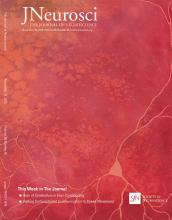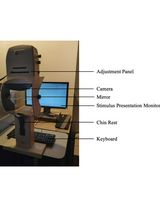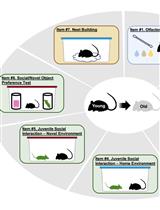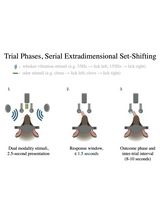- EN - English
- CN - 中文
Predator Odor-induced Freezing Test for Mice
捕食者气味诱导的小鼠僵住试验
发布: 2017年09月05日第7卷第17期 DOI: 10.21769/BioProtoc.2534 浏览次数: 9068
评审: Soyun KimAnonymous reviewer(s)
Abstract
The innate fear response is an emotional response that does not require any previously acquired conditioning. One of the standard methods to analyze the innate fear response is a 2,4,5-trimethylthiazoline (TMT)-induced freezing test. TMT is an odor originally isolated from anal secretion of the red fox. Acute TMT exposure has been shown to induce robust freezing behavior in rats and mice (Wallace and Rosen, 2000; Galliot et al., 2012). Here, I show how to expose mice to TMT and how to analyze their freezing behavior.
Keywords: Fear (恐惧)Background
To escape detection by predators, many mammalian species, including rodents, have developed innate fear responses triggered by odor stimuli that indicate the presence of predators (Takahashi et al., 2005). The predator’s odorous substance, such as excretion and fur particles, triggers anxiety in the rodent without direct contact and induces avoidance or freezing behavior, depending on the circumstances. For example, if a mouse is not able to run away from the source of the odor (e.g., confined to a small box), the mouse freezes. If the mouse can run away, they will avoid the source of the odor rather than freeze (Hacquemand et al., 2010; Johnston et al., 2012). TMT (2,4,5-trimethylthiazoline), a component of fox feces, is the most used synthesizable reagent for inducing innate fear in rodents (Vernet-Maury et al., 1984). Wallace et al. found that innate fear responses of rats can be quantified by measuring the freezing duration when the animals are exposed to TMT in a small confined space. They also found that innate fear responses to TMT do not induce conditioned learning. This finding indicates that different neural pathways are activated during TMT exposure from those activated during conventional footshock-induced fear responses. Lesion studies have shown that the regions associated with the innate fear responses include the medial/central nucleus of the amygdala and the bed nucleus of the stria terminalis (BNST) (Fendt et al., 2003; Müller and Fendt, 2006). Here, I present conventional methods for measuring TMT-induced fear responses in the mouse.
Materials and Reagents
- Kimwipe (1.5 x 2 cm)
- Plastic bag
- Gloves
- Disposable circular test chamber with a transparent lid (13 cm in diameter, 10 cm in height)
Note: Transparent lid is required for video tracking. I purchased the opaque chambers (B-313, Tokyo Garasu Kikai) and modified their lids to be transparent. However totally transparent chamber could be utilized alternately. - C57BL/6J from Charles River Laboratories, 14 weeks old
- 2,5-Dihydro-2,4,5-trimethylthiazoline (TMT) (Contech, catalog number: 13267 )
Note: Contech no longer manufactures TMT. Obtain from other vendors (e.g., ChemSpider, catalog number: 231591 ). - 80% ethanol
- 5% ammonium hydroxide
Equipment
- Charge-coupled device (CCD) camera (Logicool, model: HD WEBCAM C270 )
- Fume hood (Safety cabinet)
- Walls (Cardboard, 30 x 35 cm)
- Pipetman pipette (P10, Gilson)
Software
- ImageFZ (ImageJ plugin; Shoji et al., 2014; http://www.mouse-phenotype.org/)
Note: Although I had used ImageFZ in the work, this software supports for only old OS (Windows XP/7 and Mac OS 9). For the compatibility with later Windows OS, a standalone software, FreezeAnalyzerForAVI (http://www.yuzaki-lab.org/publication/software) can be used as an alternative (compatible with Windows XP/7/8.1/10).
Procedure
文章信息
版权信息
© 2017 The Authors; exclusive licensee Bio-protocol LLC.
如何引用
Readers should cite both the Bio-protocol article and the original research article where this protocol was used:
- Otsuka, S. (2017). Predator Odor-induced Freezing Test for Mice. Bio-protocol 7(17): e2534. DOI: 10.21769/BioProtoc.2534.
- Fendt, M., Endres, T. and Apfelbach, R. (2003). Temporary inactivation of the bed nucleus of the stria terminalis but not of the amygdala blocks freezing induced by trimethylthiazoline, a component of fox feces. J Neurosci 23(1): 23-28.
分类
神经科学 > 行为神经科学 > 认知
您对这篇实验方法有问题吗?
在此处发布您的问题,我们将邀请本文作者来回答。同时,我们会将您的问题发布到Bio-protocol Exchange,以便寻求社区成员的帮助。
Share
Bluesky
X
Copy link












